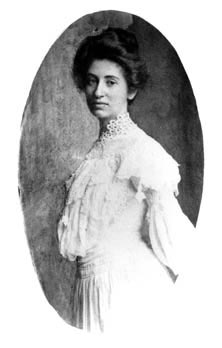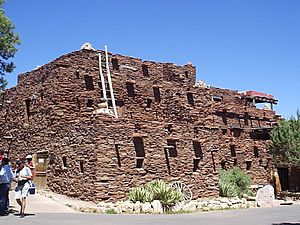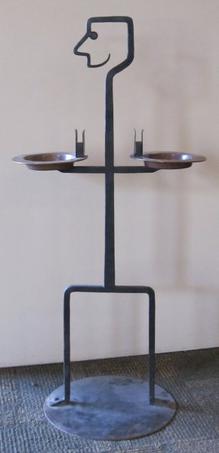Mary Colter facts for kids
Quick facts for kids
Mary Elizabeth Jane Colter
|
|
|---|---|
 |
|
| Born | April 4, 1869 |
| Died | January 8, 1958 (aged 88) |
| Nationality | American |
| Alma mater | California School of Design |
| Occupation | Architect |
| Parent(s) | William Colter, Rebecca Crozier Colter |
| Buildings | Hopi House, The Lookout, Hermit's Rest, Phantom Ranch, the Desert View Watchtower, Bright Angel Lodge, El Navajo, and the La Fonda |
Mary Elizabeth Jane Colter (born April 4, 1869 – died January 8, 1958) was a famous American architect and designer. She was one of the very few women architects in her time. She designed many important buildings and spaces for the Fred Harvey Company and the Santa Fe Railroad. Many of her most famous works are in Grand Canyon National Park.
Mary Colter's designs were very influential. She mixed different styles like Spanish Colonial Revival and Mission Revival architecture with ideas from Native American art and Rustic elements. This unique style became very popular across the Southwest. Mary Colter was a perfectionist. She spent her life protecting her design ideas in a field mostly run by men.
Early Life and Education
Mary Colter was born in Pittsburgh, Pennsylvania. Her family moved around a lot, living in Colorado and Texas. They finally settled in St. Paul, Minnesota, when Mary was eleven. She always thought of St. Paul as her home.
In 1880, St. Paul was a busy town with many Sioux people living there. A friend gave Mary some drawings of Sioux art. This is when she first became fascinated with Native American cultures. When a sickness spread through the Indian community, her mother tried to burn all their Native American items. She was afraid the family would get sick. But Mary secretly saved those drawings. She kept them for the rest of her life.
Mary finished high school in 1883 when she was 14. After her father passed away in 1886, she went to the California School of Design. She studied art and design there until 1891. After college, she moved back to St. Paul. She taught art, drafting, and architecture for 15 years at Mechanic Arts High School. She also gave lectures at the University Extension School.
Designing Buildings and Spaces
In 1901, Mary Colter got a summer job with the Fred Harvey Company. This company ran famous restaurants along the railroad. Her first job was decorating the Indian Building at the Alvarado Hotel in Albuquerque.
By 1910, Colter started working full-time for the Fred Harvey Company. She moved from being an interior designer to an architect. For the next 38 years, she was the main architect and decorator for the company. She was one of the few women architects in the country. Mary Colter worked in tough conditions to complete 21 important hotels, lodges, and public spaces.
The Fred Harvey Company helped develop the American West. They used efficient restaurants, friendly young women as waitresses, and high-quality souvenirs. They also promoted tourism. Experts working for the company found beautiful Native American art and crafts. Mary Colter then designed buildings with amazing decorations. She made sure her designs were true to the local culture. She also planned the buildings so they were easy for people to use and good for business.
In 1925, the Santa Fe railroad bought the La Fonda hotel in Santa Fe, New Mexico. They asked the Harvey Company to run it. Mary Colter was put in charge of the interior design and decoration for a big expansion. She hired artists from nearby pueblos to make the furniture. Native American styles were used in everything. This included handmade chandeliers, copper and tin lights, tiles, and fabrics. La Fonda became the most successful Harvey House hotel. Its mix of Pueblo and Spanish art, known as the Santa Fe Style, became very popular.
Grand Canyon Buildings
Mary Colter created many amazing buildings in Grand Canyon National Park. Most of them are on the South Rim. These include the Hopi House (1905), Hermit's Rest (1914), and the Lookout Studio. She also designed the Desert View Watchtower (1932). This tower is 70 feet tall and looks like it's made only of rock, but it has a hidden steel frame.
Other Grand Canyon projects include the Bright Angel Lodge (1935) and the Phantom Ranch buildings (1922). Phantom Ranch is located at the very bottom of the canyon. Mary Colter also decorated, but did not design, the park's El Tovar Hotel. In 1987, her Grand Canyon buildings were recognized as a National Historic Landmark.
Colter used many different architectural styles. These included Pueblo Revival architecture, Spanish Colonial Revival architecture, Mission Revival architecture, and Streamline Moderne. She often blended several styles together. Her work even helped inspire the Pueblo Deco style.
In 1922, the Harvey Company was allowed to run a camp at the bottom of the Grand Canyon. This became Phantom Ranch. Mary Colter used stones found on site and rough wood for the buildings. This was the most practical way to build there. Her innovative work became a model for later buildings in national parks. This style is often called National Park Service Rustic. Her Grand Canyon buildings set the example for using local materials and bold designs.
For her Bright Angel Lodge on the South Rim, she used a 6-foot scale model. This helped her make sure the lodge and cabins fit perfectly into the landscape. The lodge has a special "geological fireplace" in the History Room. Rocks are arranged from floor to ceiling in the same order as the rock layers along the Bright Angel Trail down the canyon.
Mary Colter was a perfectionist who smoked a lot. She loved creating a story for her buildings. She designed Hermit's Rest to look like a small, quirky building made by a lonely mountain man. The Hopi House was a market where Hopi artists sold their crafts. It was designed with sandstone to look like a Hopi pueblo. The Watchtower was built after much travel and research. Mary even wrote a guide manual for the tour guides there. The original paintings inside the tower were done by Hopi artist Fred Kabotie. She also insisted on the name "Phantom Ranch" because it sounded more exciting than "Roosevelt Ranch."
Other Important Works
One of Mary Colter's early masterpieces was the El Navajo hotel in Gallup, New Mexico, built in 1923. It was special because it mixed Native American-inspired designs with the modern Art Deco style. She used Navajo sand paintings and rugs. She also designed hand-carved and hand-painted furniture. Sadly, the hotel was torn down in 1957 to make way for a wider road. Mary was very sad to see some of her projects destroyed before she died.
Mary Colter herself said the La Posada Hotel in Winslow, Arizona, built in 1930, was her best work. This large, hacienda-style building is called "the last great railroad hotel built in America." She designed the entire resort. This included the buildings, the gardens, the furniture, the dishes, and even the maids' uniforms. The hotel closed in 1957. It was empty for a long time until 1996. That's when Allen Affeldt and his wife Tina Mion bought it. They have been working to restore it to its original beauty.
Later in her career, Colter designed the lively Harvey House restaurant at the Union Station in Los Angeles (1939). The floor had a stunning pattern that looked like a giant Navajo blanket made of linoleum tiles. This beautiful dining room and her sleek, Streamline Moderne cocktail lounge were closed for many years. They were only used for movie shoots or tours. In 2018, the restaurant finally reopened.
Not long before she retired, Mary Colter worked on the Painted Desert Inn in Arizona's Petrified Forest National Park (1947). She updated the inn, choosing a new color scheme. She also asked Hopi artist Fred Kabotie to paint murals in the dining areas. Mary was not afraid to use modern ideas when needed. She installed large plate glass windows to offer amazing views of the scenery. The inn closed in 1963 but was saved from being torn down. It reopened in 2006, looking just as it did after Colter's redesign.
Mary Colter also designed the Mimbreño china and silverware. This was used on the fancy Super Chief train service from Chicago to Los Angeles. This train started in 1936. Colter was an expert in Indian art. She based her designs on patterns from the Mimbres people. These patterns were over 800 years old! The china was made until 1970. When the train service changed, the Mimbreño dishes were sold to the public. Today, these dishes are very popular with collectors.
Legacy
Mary Colter retired in Santa Fe, New Mexico, in 1948. She gave her collection of Native American pottery and other Native American items to Mesa Verde National Park. Four of her buildings in Grand Canyon National Park are protected as part of the Mary Jane Colter National Historic Landmark District.
Images for kids
See also
 In Spanish: Mary Colter para niños
In Spanish: Mary Colter para niños






